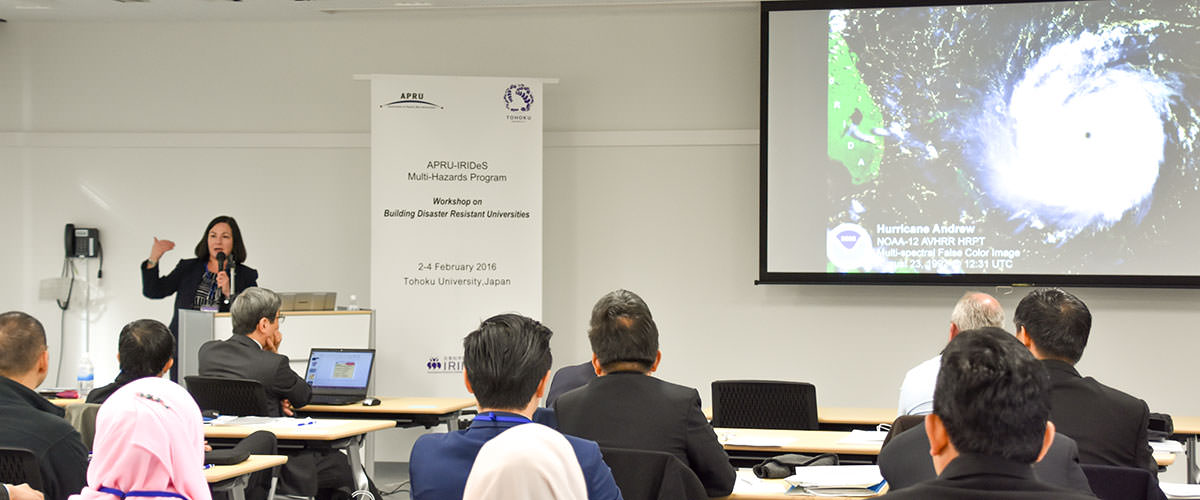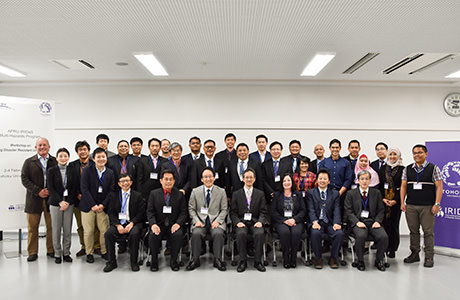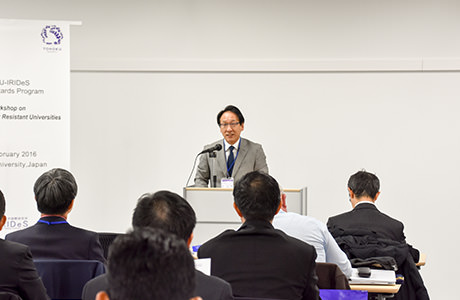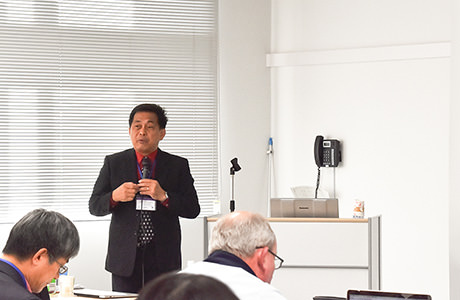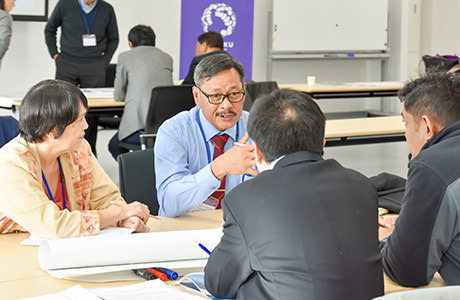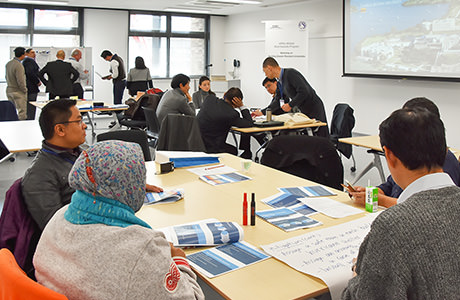1st Workshop on Building Disaster Resistant Universities
~Is Your University Ready for the next Natural Disaster?~
2-4 February 2016 at Tohoku University in Japan
A special workshop focusing on preparedness for natural disasters was organized at Tohoku University in Japan under the APRU Multi-Hazards Program. More than 30 participants attended including faculty, staff and students from 16 universities in the United States, Australia, China, Chinese Taipei, Indonesia, Japan, Korea, the Philippines, Singapore, and Thailand. This workshop aimed to discuss common challenges and issues, lessons learned from other universities, and tools to develop an effective emergency plan that will address areas needing improvement and enhance overall university preparedness.
Prior to this workshop, the APRU MH Program conducted a survey among the current status of disaster preparedness capacity on campus in 2014. Twenty-two APRU member universities responded to the survey. While many strengths were recognized, there were also areas identified as needing further development.
Report
- Campus Safety Survey Results
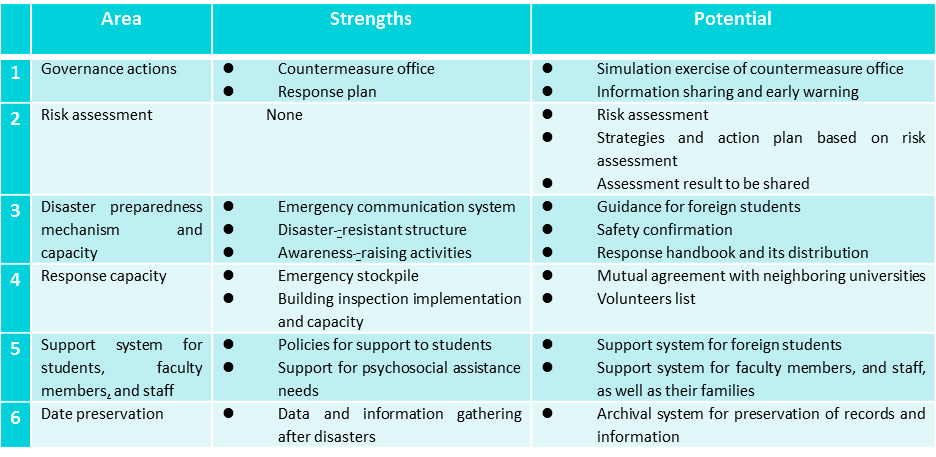
- Area that more att ntions are required
-
- Risk assessment
- Early warning/alert
- Simulation exercise of response mechanism
- Support and consideration for foreign students
Discussion Summary
The discussions during the workshop suggested that leadership is key and indispensable during emergencies in terms of making critical and prompt decisions and ensuring that staff identify what needs to be done for immediate response and recovery. It is crucial to implement the incident command system in an emergency situation, and this system must be widely understood. Some universities do not have such a specific system; rather the regular organizational structure is adopted as the incident command system. Each university must identify the structure that best suits its context and make it work as a key to effective emergency management.
Also, during the preparedness stage, universities need to develop an adequate emergency management plan for recovering from any damage. This process requires gaining understanding and support from a policy group as well as obtaining adequate funding and human resources. To identify any current oversights or weaknesses, universities should also conduct simulation exercises using existing plans.
- The keys to campus safety are as follows:
-
- Involving a policy team (decision-making body)
- Developing an emergency management plan (preparedness and response plan, etc.)
- Conducting exercises, drills, or simulations using the existing plan to assess its efficacy
- Reviewing the plan every few years to determine whether it can cope with emergencies and whether it suits the current university structure
- The discussion highlighted various strengths:
-
- Universities in this region have similar management structures and therefore share common issues and concerns. Accordingly, they can learn from one another and adopt similar efforts.
- They also share access to strong networks, such as the APRU, to exchange views and concerns and obtain feedback and suggestions. In this case, practical experience of what has worked well or did not work are especially valuable. Such networking also ensures a strong possibility of continuing this dialogue and initiative with additional workshops and training.
- Likewise, universities in this region have experienced various disasters, making them experts on several types of disasters.
- At the same time, several weaknesses were also identified:
-
- A lack of permanent staff and managers in the safety and security office. Also, once senior managers of the university such as the safety director and president are replaced, interest and understanding on campus safety issues can become hard to sustain. Changes in staff leadership can often make it difficult to conduct regular drills and exercises.
- University resources needed for emergency planning and preparedness must be shared with other objectives such as research, innovation, and experimentation, and the battle for resources can be very competitive. Consequently, campus safety projects tend to suffer from inadequate resources.

At the end of the discussion, the participants requested the APRU to continue providing opportunities for discussion and learning on campus safety issues and to address the importance of involvement by senior managers and leaders in a university policy group on this topic. This message will be conveyed to senior managers of the APRU member universities as well as other universities and research institutes in the APRU geographic area through regional and international conferences and discussions.
DAY 1: 2 February 2016
- OPENING
- Opening remarks by Prof. Masahiro Yamaguchi
(Associate Executive Vice President for International Affairs, Tohoku University) - Opening remarks by Prof. Fumihiko Imamura
(Director, IRIDeS, Tohoku University)
- PRESENTATION
- The APRU Multi-Hazards Program and Results of Campus Safety Survey
(Dr. Takako Izumi, IRIDeS) - What Is Campus Safety?
(Ms. Amy Aiken, Florida International University) - Case study 1: Tohoku University
(Prof. Hiroaki Maruya, IRIDeS) - Case study 2: National University of Singapore
(Dr. Peck Tian Guan, NUS) - Case study 3: University of the Philippines Diliman
(Prof. Benito M. Pacheco, UP Diliman) - “Printing and copying are restricted”
- GROUP ACTIVITY 1
- Group activity 1: the 4 phases of disaster management: what steps would be taken for each phase Group presentation and discussion
-
DAY 2: 3 February 2016
- PRESENTATION
- Developing and Evaluating an effective Emergency Plan
(Ms. Amy Aiken, FIU) - “Printing and copying are restricted”
- GROUP ACTIVITY 2
- Group activity 2: Developing and Evaluating a plan
Group presentation and discussion -
DAY 3: 4 February 2016
- FIELD TRIP
- A field trip to the affected sites (Yuriage, Kitakama, and Tsunami evacuation tower
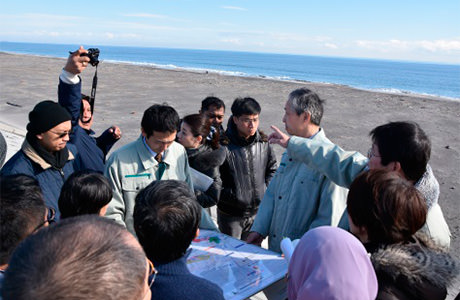
Kitakama Coastal Dike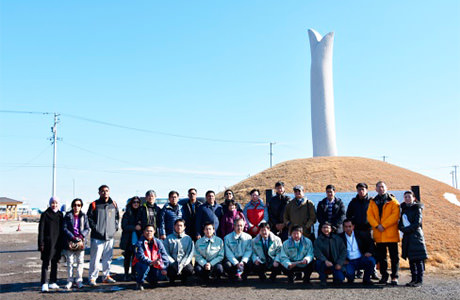
Memorial Monument in Hiyoriyama
Tsunami Evacuation Tower in Sendai

